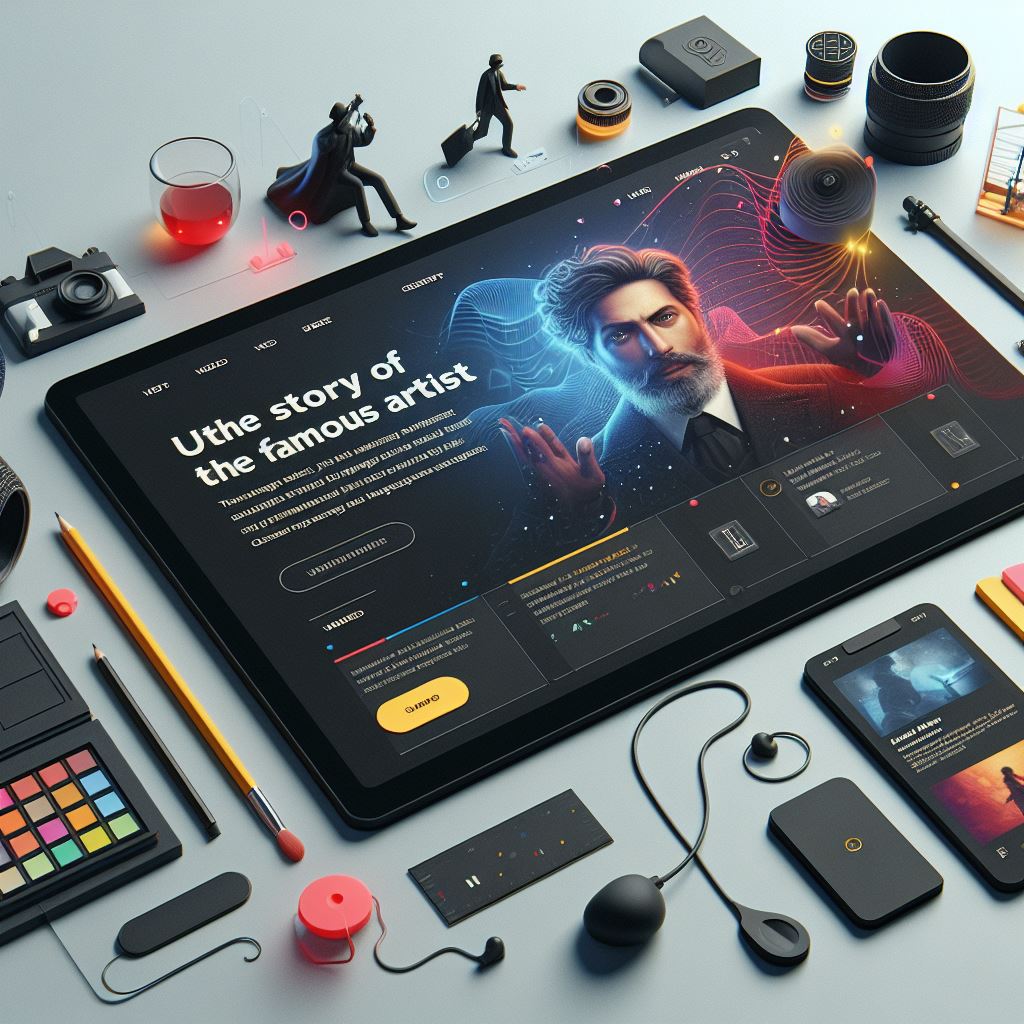
Storytelling has transcended its traditional boundaries, emerging as a pivotal strategy in web design and development. Its effectiveness in engaging audiences and conveying messages with impact has led professionals to explore innovative approaches to integrate storytelling elements into digital platforms. Through interactive storytelling techniques, developers can create immersive, memorable web experiences.
The Essence of Storytelling in Engaging Users
Storytelling it’s a powerful tool for engaging users and creating memorable experiences. At the heart of effective storytelling in web design lies coherence and unity. Every element, from the layout to the interactive features, plays a part in crafting a seamless narrative experience. By carefully curating content and visuals, designers can evoke emotions, spark curiosity, and foster a deeper connection with the audience.
Storytelling enhances user comprehension and retention. When information is presented within the context of a story, it becomes more relatable and memorable. Users are more likely to engage with content that speaks to their experiences and aspirations, leading to increased time spent on the website and higher conversion rates.
Successful storytelling in web design requires understanding the target audience and tailoring the narrative to resonate with their interests and values. By tapping into universal themes and emotions, designers can create experiences that leave a lasting impression.
Crafting Narrative-Driven Web Experiences
Narrative-driven web experiences are those that guide the user through a story, where each interaction adds a chapter to their journey. This methodological approach requires meticulous planning, starting with defining the story’s core message and understanding the target audience’s preferences and pain points. The narrative should ideally reflect the brand’s values, mission, and what sets it apart, using storytelling to reinforce the user’s connection with the brand.
An often overlooked aspect of storytelling in web design is character development. This doesn’t necessarily refer to fictional characters but can also represent the user or brand. In narrative-driven experiences, users could be positioned as the protagonist of the story, with the website offering them challenges to overcome (e.g., finding information or products), helping them achieve their goals, thereby moving the story forward. Incorporating such personalized elements into the web design makes the experience more engaging and memorable for the user.
Interactive Storytelling Techniques
Interactive storytelling amplifies the narrative-driven approach by allowing users not just to view content passively but to become active participants in the story. This interactivity can take various forms, such as clickable timelines, scroll-triggered animations, parallax scrolling, and interactive videos. These elements make the user’s journey through the website more dynamic and exciting, encouraging deeper engagement with the content.
Visual design is very important for storytelling by setting the scene and mood, illustrating key points, and guiding users through the story. The use of images, videos, typography, and color schemes needs to be coherent and supportive of the narrative. For instance, a website designed for a conservation organization might use earthy colors and imagery of nature to immerse the user in a story about environmental preservation.
Enhancing User Experience through Narrative Elements
Narrative elements are very important for enhancing the user experience (UX). Each interaction point becomes a thread in the larger narrative fabric, guiding users through a seamless journey of discovery and engagement.
From navigation menus to layout choices, every UX element should contribute to the coherence and flow of the narrative. Intuitive design ensures that users can effortlessly navigate through the story, without encountering unnecessary obstacles or confusion. By aligning design elements with the overarching narrative, websites create a sense of continuity and immersion, making the user experience enjoyable and fulfilling.
Furthermore, interaction design plays a pivotal role in sustaining user engagement. Interactive elements should not only serve functional purposes but also advance the narrative, providing users with opportunities to actively participate in the storytelling process. Whether through animated transitions, parallax scrolling, or dynamic content, these design choices captivate users and draw them deeper into the unfolding narrative.
A well-executed narrative-driven website eliminates friction points, allowing users to focus on the story being told rather than grappling with usability issues. By prioritizing clarity and coherence in UX design, websites can create compelling experiences that resonate with users on a profound level.
Measurement and Adaptation
Measuring the effectiveness of narrative-driven and interactive techniques is essential for continuous improvement. Using analytics and user feedback, developers can gauge engagement levels, identify points where users drop off or disengage, and understand which elements of the story are most compelling. This data allows for iterative improvements to the narrative structure, interactive elements, and overall design, ensuring that the storytelling elements consistently resonate with users.
Consider the approach of successful narrative-driven websites, such as those for product launches or brand storytelling campaigns, where the storyline captivates the user from the first moment. These sites often achieve higher engagement rates, increased time on site, and better conversion rates, showcasing the power of effective storytelling in web design.
Implementing Storytelling in Web Projects
For web developers eager to implement storytelling in their projects, the startup point is understanding the brand’s story and how it aligns with user expectations and desires. From there, develop a storyboard for the web experience, mapping out how each section or page contributes to the overall narrative. Use interactive elements sparingly and purposefully, ensuring they serve the story and enhance user engagement without overwhelming or confusing.
To create truly engaging web experiences through storytelling, developers and designers must collaborate closely, focusing on a shared vision of the story they wish to tell and the impact they aim to achieve. This cross-disciplinary effort ensures that every aspect of the web design—from the initial concept to the final interactive elements—contributes to a cohesive, compelling narrative that captivates the audience.
Through the strategic use of storytelling in web design, developers have the power to transform ordinary sites into extraordinary narrative-driven experiences. By engaging users on a deeper level and conveying messages in a more impactful manner, these narrative and interactive techniques create memorable web experiences that resonate long after the user has moved on.